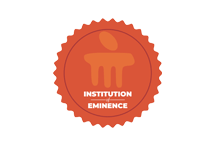Comprehensive Investigation of Hardness, Wear and Frictional Force in Powder Metallurgy Engineered Ti-6Al-4V-SiCp Metal Matrix Composites
Document Type
Article
Publication Title
Journal of Composites Science
Abstract
Metal matrix composites (MMCs) have achieved significant attention in engineering applications because of their exceptional properties, like increased strength-to-weight ratiosand resistance to wear. However, their manufacturing processes pose challenges for industries, such as oxidation, porosity, and chemical reactions. To address these challenges, this study investigates the processing and sintering (500 °C) of Ti-6Al-4V-SiCp composites and their mechanical properties, particularly hardness, wear and frictional force using a statistical approach. The main objective of this research is to identify optimal processing conditions for Ti-6Al-4V-SiCp composites that yield maximum hardness, minimal wear and frictional force. Thisstudy varies three key parameters, namely compaction pressure (Ton/sq.inch), SiC (wt.%), and PVA binder (wt.%) using Taguchi’s design of experiments (TDOE). Further, the response surface methodology (RSM) is used to develop second-order models to predict the output values under different processing conditions, by correlating with the values obtained from TDOE. The results indicate that the most significant influence on the output is exerted by SiC (wt.%), followed by PVA binder (wt.%) and compaction pressure (Ton/sq.inch). To achieve higher hardness with minimal wear and frictional force during processing, SiCp (15 wt.%), compaction pressure (4 Ton/sq.inch), and PVA binder (3 wt.%) arerecommended. Finally, microstructural analysis using (SEM) scanning electron microscope images, optical macrographs and (AFM) atomic force microscopy revealed that the inclusion of 15 wt.% SiCp resulted in improved hardness, wear and frictional force compared to 20 wt.% SiCp. In conclusion, this study provides valuable insights into optimizing the processing parameters of Ti-6Al-4V-SiCp samples, enabling the production of materials with enhanced hardness and wear resistance.
DOI
10.3390/jcs8020039
Publication Date
2-1-2024
Recommended Citation
Hegde, Adithya; Nayak, Rajesh; Bolar, Gururaj; and Shetty, Raviraj, "Comprehensive Investigation of Hardness, Wear and Frictional Force in Powder Metallurgy Engineered Ti-6Al-4V-SiCp Metal Matrix Composites" (2024). Open Access archive. 6886.
https://impressions.manipal.edu/open-access-archive/6886


